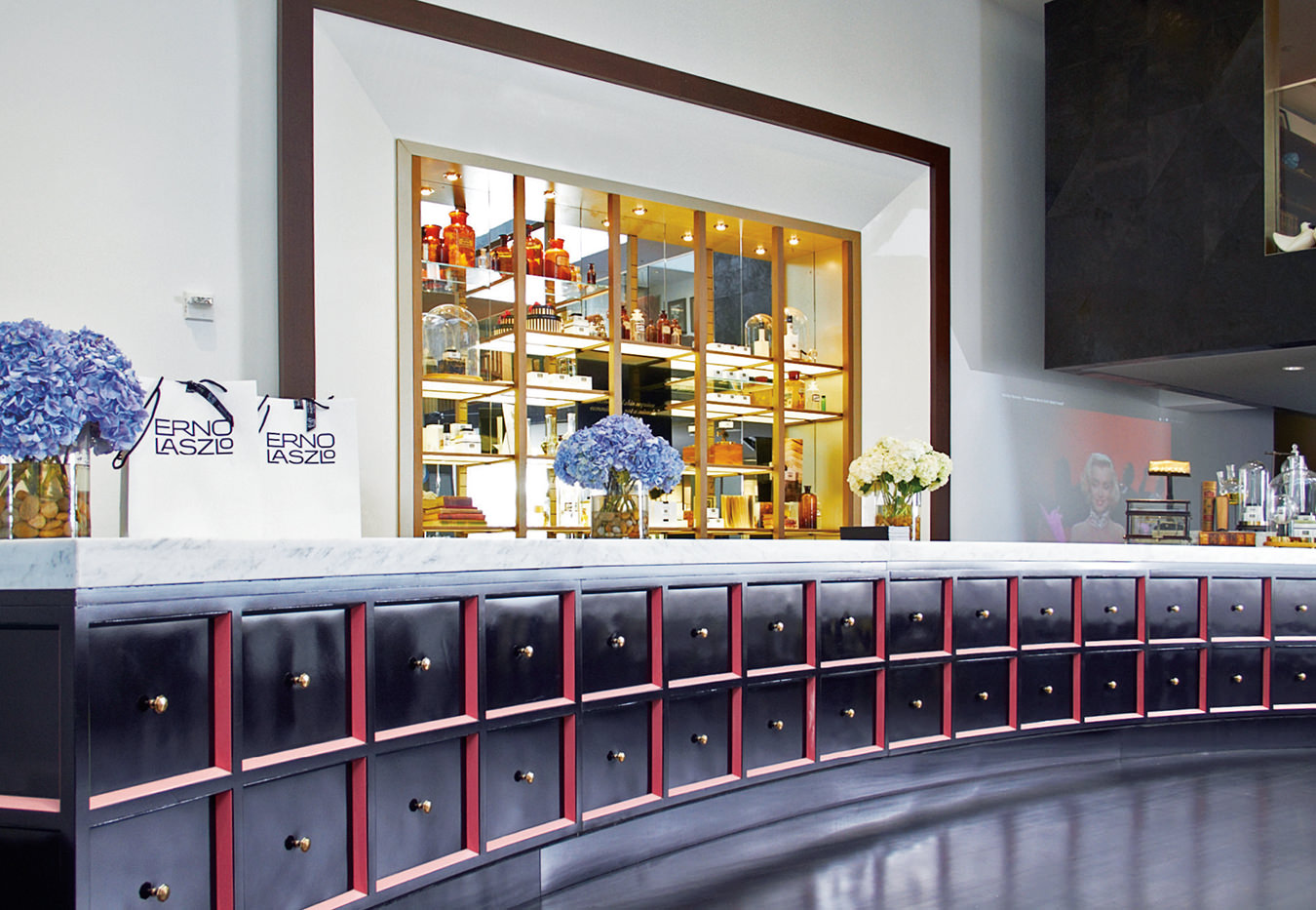-
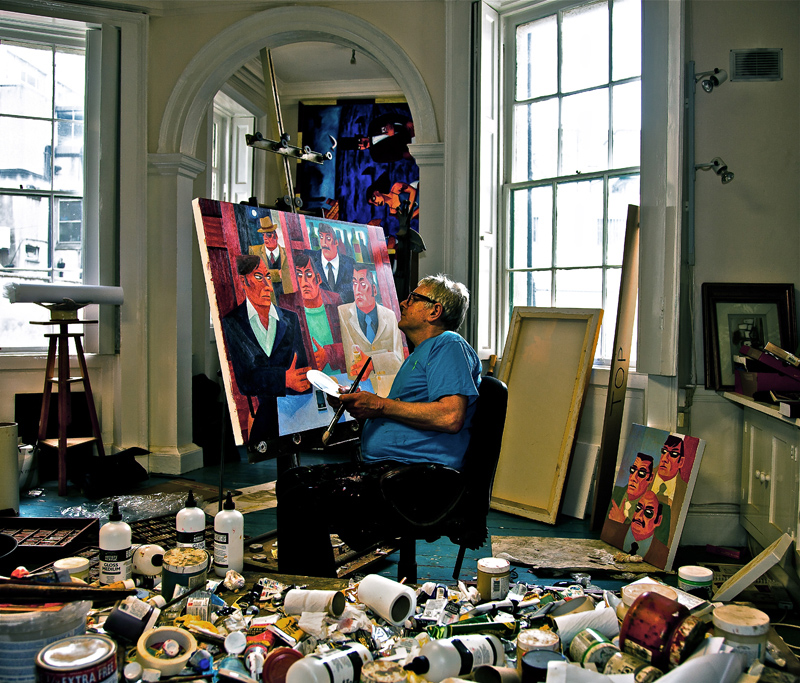
Graham Knuttel in his studio.
-
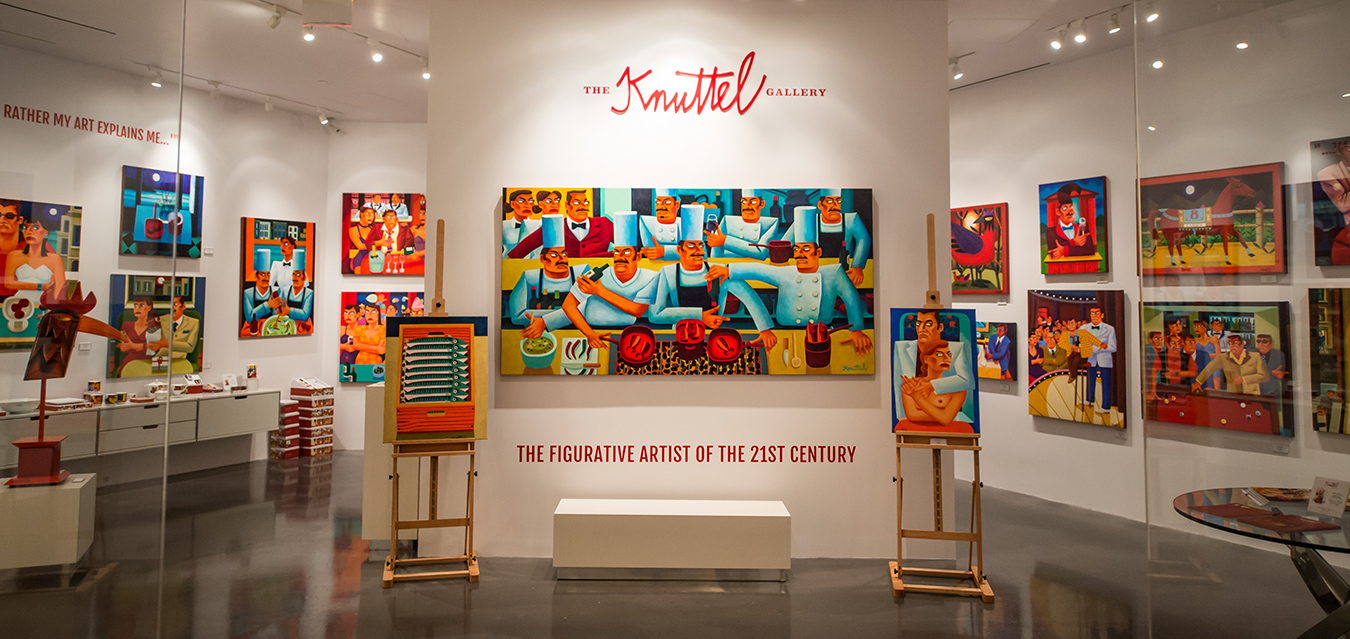
The Knuttel Gallery in the Palazzo, Las Vegas.
-
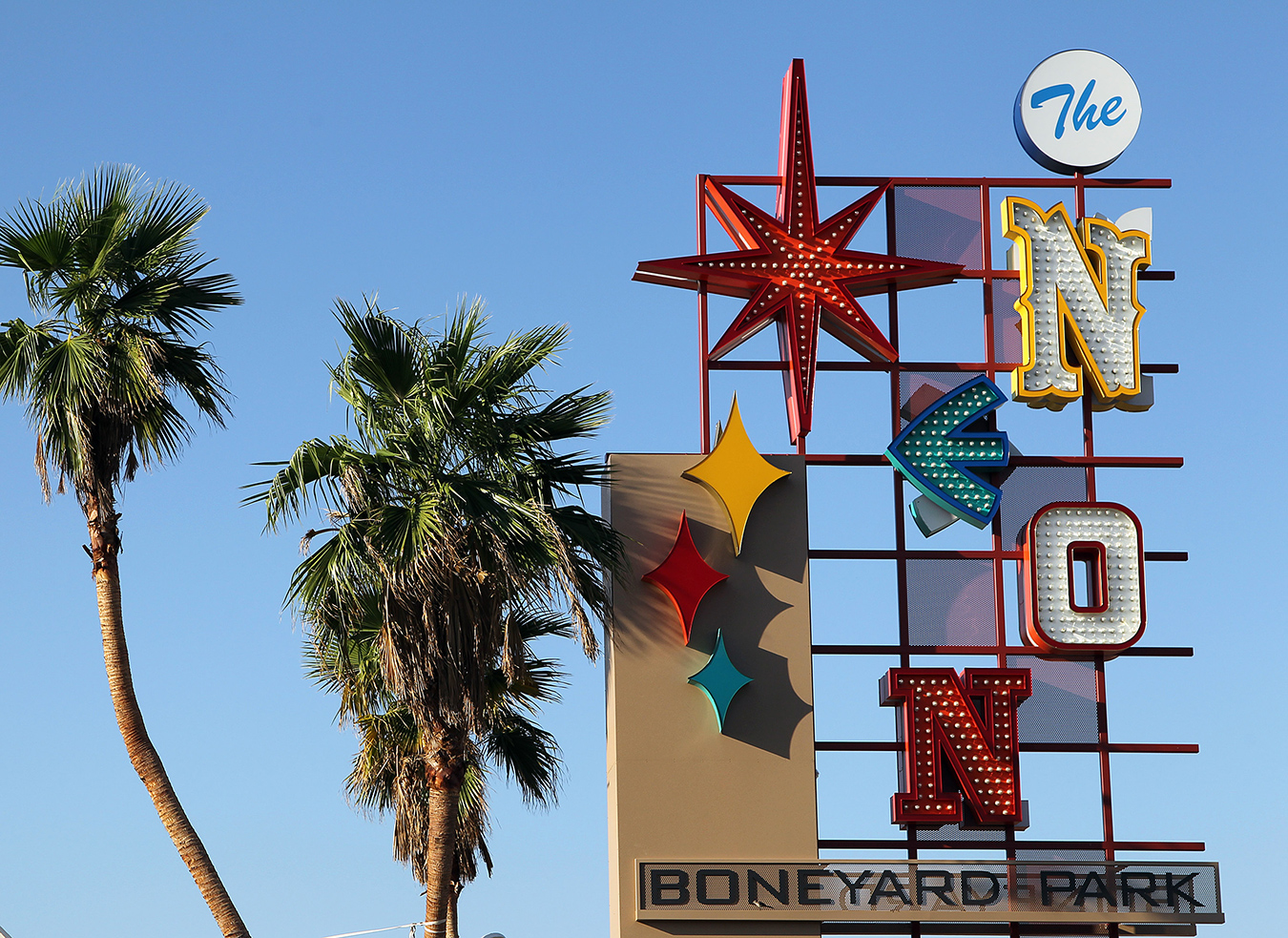
The Neon Museum.
-
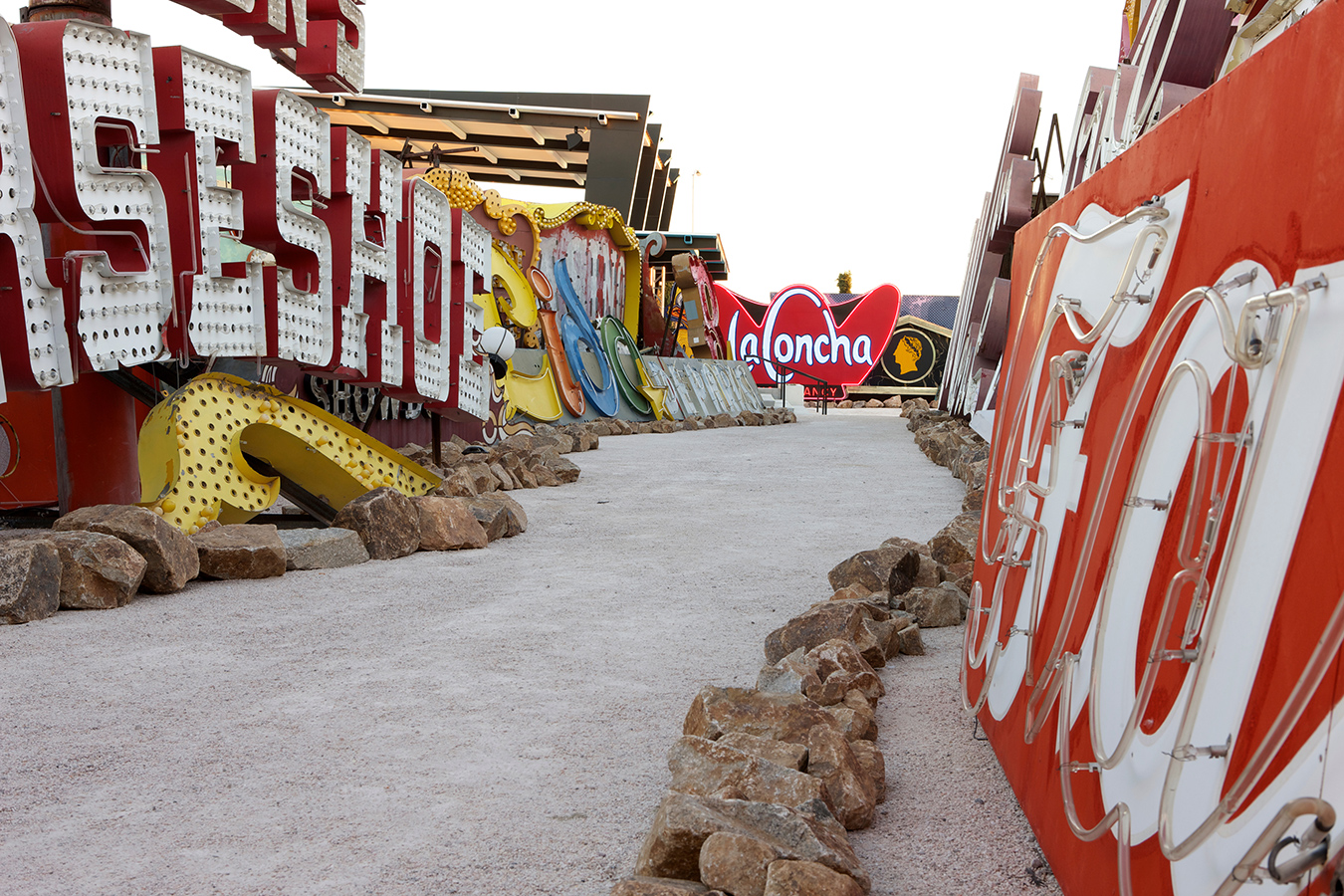
The Neon Boneyard at the Neon Museum.
-
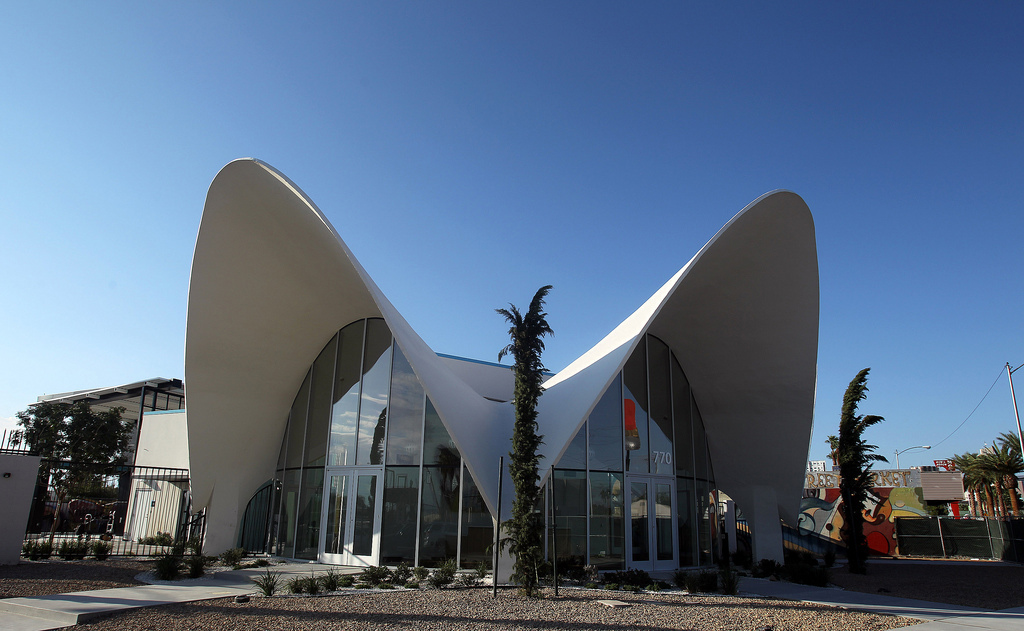
The Neon Museum visitors’ centre.
-
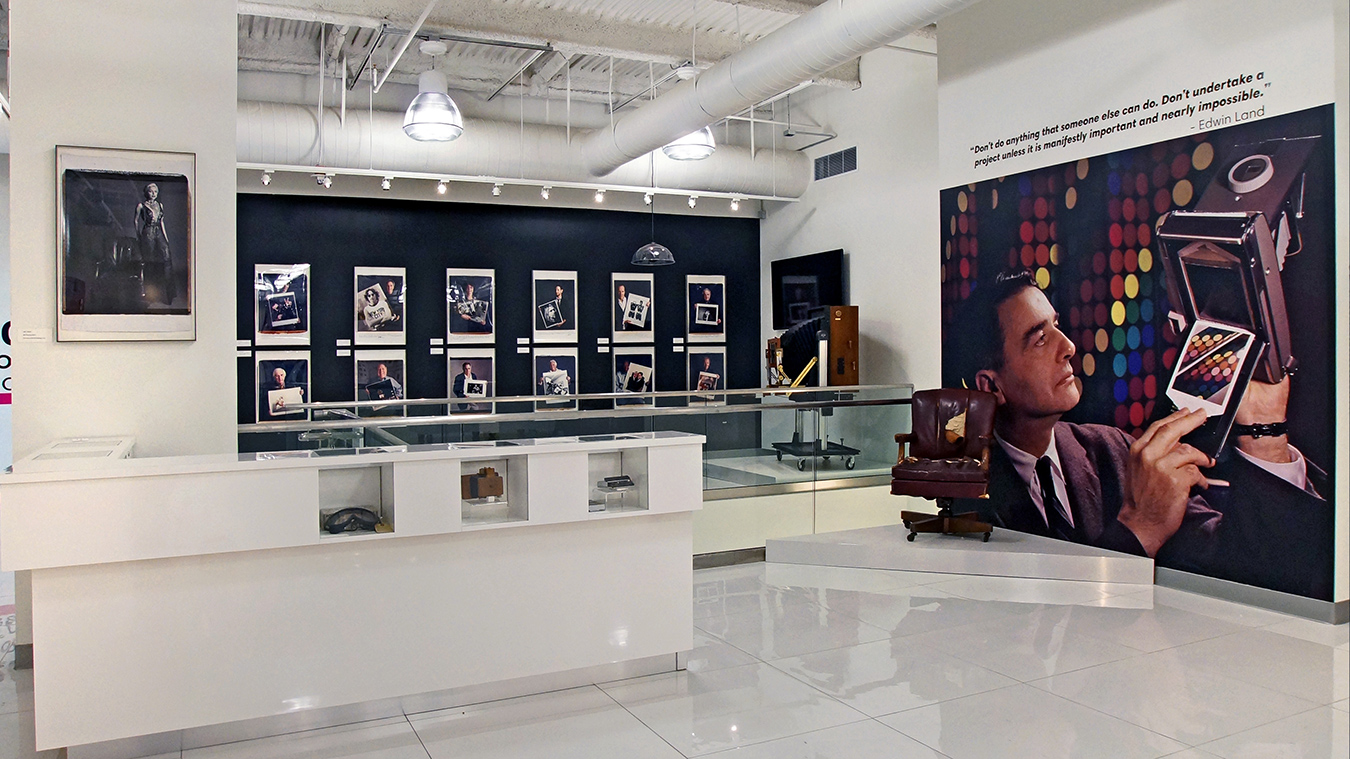
The Polaroid Museum.
-
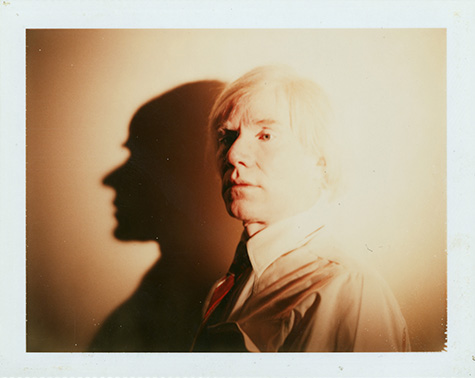
Andy Warhol, Self-Portrait, 1981, Polaroid Polacolor 2.
Art in Sin City
A colourful three-stop tour.
It goes without saying that Las Vegas is a feast for the senses, but there’s another oft-overlooked side to this city. Long lauded for its performance arts (and rightfully so, with spectacles like Le Rêve at the Wynn, Cirque du Soleil’s latest mount, and some of music’s biggest names performing along the Strip), Vegas has seen a renewed interest in other art forms, resulting in visitors and locals alike discovering eye-catching works in surprising places. Here, a colourful tour of art in Sin City—both on the well-beaten path and off.
The Knuttel Gallery
Irish artist Graham Knuttel’s namesake gallery opened earlier this year on the second floor of the Grand Canal Shoppes at the Palazzo, and the walls are lined with vibrant, dramatic figurative works. Despite the serious faces in Knuttel’s paintings, the humour in each piece is evident upon closer inspection. “You can make whatever interpretation of them you want, and you’ll probably be right,” the artist says with a chuckle. “I think artists are always making self-portraits, but nobody knows what’s happening, not even me.” His artworks are riddled with curious characters—sailors, chefs, mobsters, cats, fish, roosters, sheep—all seemingly suspicious of each other. “I don’t do smiling,” he says. “It gives the piece tension.”
This is the first gallery dedicated to the Dublin-born artist, who draws inspiration from Pablo Picasso, Roy Lichtenstein, and Vincent van Gogh, and whose works have been collected by the likes of Frank Sinatra, Sylvester Stallone, and Robert De Niro. “I think artists are entertainers,” Knuttel continues. And in this sense, his new Vegas gallery commands just the right audience.
The Neon Museum
Neon signage is perhaps the art Vegas is best known for. The Neon Museum is a non-profit organization dedicated to collecting, preserving, and exhibiting historical Las Vegas signs—highlighting the stories of the artists who created them and the role they played in the history of the city. Since its founding in 1996, the museum has amassed a collection of nearly 150 signs, most of which are displayed in the Neon Boneyard. A walk through its winding paths is a fascinating, at times eerie form of time travel—pieces range from the 1930s to the present day, with some of the most famous original signs on display: Caesars Palace, Binion’s Horseshoe, the Stardust.
The visitors’ centre also has historical relevance: the distinctive shell-shaped building is an example of mid-century modern architecture, designed by Paul Revere Williams. It was originally constructed in 1961 on Las Vegas Boulevard South. It was saved from demolition in 2005 and moved to its current location on Las Vegas Boulevard North as part of the Neon Museum—its Space Age–inspired dome now a desert landmark itself.
The Polaroid Museum
The Polaroid Museum pays homage to the art of the instant camera. Located in the Linq, a new shopping and dining district opened by Caesars Entertainment earlier this year, the museum celebrates the inventions of Edwin Land with displays of old Polaroid camera models lining a pristine white space, and a variety of mini-exhibits from acclaimed fans of the medium. In collaboration with the Andy Warhol Museum, Capturing Celebrity features 50 of Andy Warhol’s most famous Polaroid photographs, including self-portraits and shots of Truman Capote, Farrah Fawcett, Mick Jagger, John Lennon, and others, along with two of Warhol’s own personal cameras.
Photos by Maurizio Galimberti and Maripol are also on display, as are highlights from Lucas Michael’s 35 candid Polaroids of winners at the 2013 Golden Globe Awards. Also tucked away in the corner is a giant 20×24 Polaroid camera (one of only five ever built). It was originally developed in 1976 by Land, who wanted to create an exceptionally large camera to demonstrate the capabilities of large-format colour film to his shareholders. The camera produces photos that are 20 inches wide and 24 inches tall, and the one on display here is still in use. For those leaving inspired, the FotoBar downstairs allows visitors to plug in their phones and print Polaroid images from the bank of images stored on their own devices.
Hazy memories are usually the souvenir currency of Vegas—you know the saying—but perhaps as the scene here continues to develop, more and more visitors will leave with a canvas in hand.




